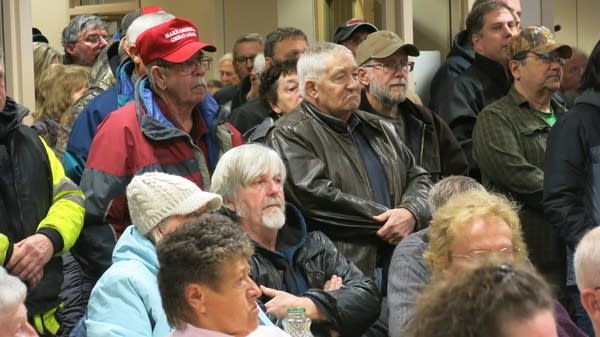Amid the chaos, Minnesota counties say ‘yea’ or ‘nay’ to refugees
What you need to know as local governments scramble to comply with Trump order

The Beltrami County board room was packed with locals Tuesday evening. Most came out to ask the commissioners to vote against the possibility of refugees resettling in the area.
John Enger | MPR News
Go Deeper.
Create an account or log in to save stories.
Like this?
Thanks for liking this story! We have added it to a list of your favorite stories.


